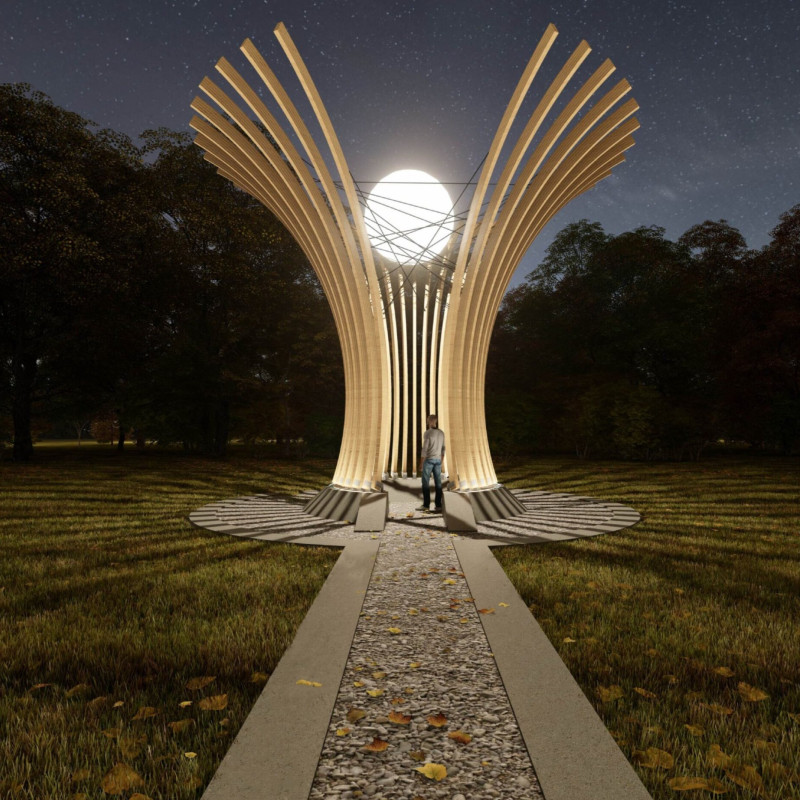5 key facts about this project
The Stronger Together Pavilion stands as a thoughtful response to important themes of interconnectedness and resilience. Located in an inspiring context, it connects historical narratives of courage with present-day challenges. The design aims to evoke a sense of community, reflecting on the powerful acts of individuals who risked their safety for others during times of conflict.
Structural Dynamics
The pavilion features a series of curved wood members that are placed on pivot joints. This arrangement creates a visual effect, symbolizing elements that seem to fall away from one another. It reflects the shared struggles experienced within communities, portraying both loss and resilience. Steel tension cables connect these wooden members, emphasizing the complexity of human relationships and the support systems that arise in times of difficulty.
Central Element
At the core of the design is a lit polyurethane sphere that serves as a focal point. This sphere emphasizes themes of positivity and unity. Its weight adds tension to the structure, while the smooth surface allows light to reflect. This feature invites visitors to see their reflections and encourages a sense of belonging within the space. It plays an important role in reinforcing the messages of hope that the pavilion conveys.
Exemplifying Resilience
The structure achieves stability through the careful balance of tension created by the leaning wood members. Gravity plays a critical role in this interaction, symbolizing the resilience found in human connections. As people engage with the pavilion, the architecture reveals how emotional vulnerability and collective strength coexist. This serves to remind visitors of the importance of community support.
Light and shadow enhance the visitor experience as they change throughout the day. The variations in lighting create a dynamic atmosphere within the pavilion. This aspect of design deepens the connection among individuals, reinforcing the idea that personal actions contribute to the broader community. The experience encourages reflection on how we can all make a difference in supporting one another.






















































